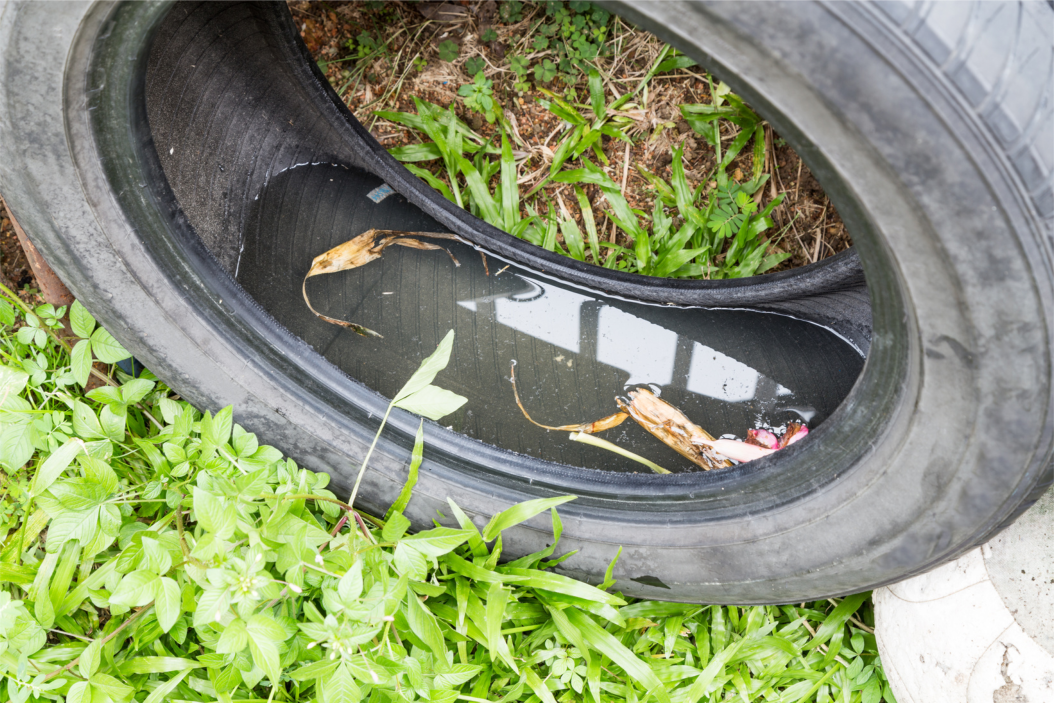Understanding Mosquito Repellent Plants
Mosquitoes are a persistent nuisance in Australian gardens, especially during the warmer months. Their presence can hinder outdoor activities and pose health risks due to the transmission of diseases. As a result, finding effective and natural solutions to control mosquito populations is crucial. This blog will explore a selection of mosquito repellent plants that can be cultivated in Australian gardens, offering an environmentally friendly and sustainable approach to mosquito management.
Australian gardens often become breeding grounds for mosquitoes due to the favorable climate and varying topography. These pests not only cause discomfort but also carry diseases like dengue fever and Ross River virus. Traditional chemical-based repellents can be effective, but they may also have adverse effects on the environment and human health. Therefore, the quest for natural and sustainable alternatives has gained significance. By incorporating mosquito repellent plants into your garden, you can create a safer and more pleasant outdoor space for yourself, your family, and your guests.
Benefits of Using Mosquito Repellent Plants
Using mosquito-repellent plants can provide several benefits, primarily related to their natural ability to deter mosquitoes and other flying insects. Here are some of the key benefits:
- Natural Repellent: Mosquito-repellent plants emit natural compounds and fragrances that mosquitoes find unappealing. These compounds act as a natural deterrent, reducing the likelihood of mosquitoes landing on or near the plants.
- Chemical-Free: Unlike many commercial mosquito repellent products that contain synthetic chemicals, mosquito repellent plants offer a chemical-free alternative. This can be especially appealing for individuals who are concerned about the potential health risks associated with synthetic insecticides.
- Safe for the Environment: Using mosquito-repellent plants can help minimize the negative impact on the environment. Synthetic mosquito repellents often contain chemicals that can be harmful to aquatic life, birds, and other non-target organisms when they enter the ecosystem through runoff.
- Aesthetic Value: Many mosquito-repellent plants are aesthetically pleasing and can enhance the beauty of your outdoor space or garden. Some of these plants have attractive foliage, colorful flowers , or unique textures, adding to the overall visual appeal of your landscaping.
- Low Maintenance: Most mosquito repellent plants are relatively low-maintenance and require minimal care once established. This can make them a convenient option for homeowners or gardeners looking to reduce the effort needed to maintain their outdoor spaces.
- Versatility: Mosquito-repellent plants come in various shapes and sizes, allowing you to choose the ones that best suit your landscaping needs. Whether you have a large garden, a small balcony, or a limited outdoor space, you can find repellent plants that fit your requirements.
- Variety of Options: There’s a wide range of mosquito repellent plants to choose from, each with its unique scent and appearance. This diversity allows you to create a customized mosquito repellent strategy that suits your preferences and the specific mosquito species in your area.
- Education and Engagement: Growing mosquito repellent plants can be an educational experience for children and adults alike. Learning about the natural properties of these plants and how they interact with insects can foster a deeper appreciation for the environment.
- Health Benefits: In addition to repelling mosquitoes, some of these plants have additional benefits. For example, some herbs like citronella, lemon balm, and basil can be harvested and used in cooking or for making herbal teas.
- Cost-Effective: Once established, mosquito repellent plants can provide ongoing protection against mosquitoes without the need to frequently purchase commercial repellent products. This can lead to cost savings over time.
It’s important to note that while mosquito repellent plants can be a valuable addition to your outdoor space, they might not provide complete protection against all mosquito species. In areas with high mosquito populations or disease transmission concerns, it’s recommended to use multiple mosquito control methods, such as proper drainage, removing standing water, and using physical barriers or approved insecticides as needed.
Factors to Consider Before Choosing Plants
Before selecting mosquito-repellent plants for your Australian garden, it’s crucial to consider regional climate variations. Australia’s diverse geography results in different climatic zones, each with its own challenges. Some plants might thrive in the tropical north but struggle in the arid central regions. Additionally, understanding your soil conditions and garden layout is essential for successful cultivation. Different plants have varying soil and light requirements, so planning their placement accordingly will ensure optimal growth and effectiveness.
The Top Mosquito Repellent Plants
Citronella
Citronella is one of the most well-known mosquito-repellent plants. With its distinct citrusy scent, it masks the attractive scents that mosquitoes are drawn to. Plant citronella in well-draining soil and provide it with plenty of sunlight. Regular pruning and maintenance will help the plant flourish. Crushed citronella leaves can also be rubbed onto the skin for added protection during outdoor activities.
Lavender
Lavender’s sweet aroma is loved by humans but disliked by mosquitoes. Its beautiful purple flowers add visual appeal to your garden while keeping mosquitoes at bay. Lavender thrives in sunny spots with well-drained soil. Pruning spent flowers and proper irrigation are essential for its growth. Additionally, dried lavender can be used in sachets to repel mosquitoes indoors.
Lemon Eucalyptus
Lemon eucalyptus, with its high citronellal content, is an effective natural mosquito repellent. This tree requires a larger planting space and well-drained soil. Its leaves can be used to extract essential oil, which can be diluted and applied to the skin. Keep in mind that lemon eucalyptus may not be suitable for smaller gardens due to its size.
Peppermint
Peppermint’s strong scent acts as a natural deterrent for mosquitoes. It’s relatively easy to grow but can be invasive, so planting it in pots is recommended. Regular harvesting will prevent it from spreading excessively. The leaves can be crushed and rubbed onto the skin for a quick mosquito-repellent solution.
Rosemary
Rosemary, a versatile herb in cooking, also has mosquito-repelling properties. Its woody aroma is pleasant for humans but repels mosquitoes effectively. Rosemary prefers well-drained soil and ample sunlight. Regular pruning and shaping will maintain its growth and form. You can also burn dried rosemary stalks to release their fragrance and repel mosquitoes during outdoor gatherings.
Designing Your Mosquito-Repellent Garden
To maximize the effectiveness of mosquito-repellent plants, consider planting them strategically throughout your garden. Create clusters or borders of these plants in areas where people gather the most. Mixing them with ornamental plants can enhance the visual appeal of your garden while providing a functional purpose.
When designing your mosquito-repellent garden, also focus on aesthetics. Choose plants with complementary colors, textures, and heights to create a visually pleasing landscape. Incorporate seating areas, paths, and decorative elements to make the space inviting and comfortable for outdoor activities.
Other Natural Mosquito Control Tips
Here are several additional natural mosquito control tips you can consider to complement the use of mosquito repellent plants and create a more comprehensive approach to reducing mosquito populations around your home:
- Eliminate Standing Water: Mosquitoes breed in standing water, so regularly inspect your property for any containers, gutters, or areas where water accumulates. Empty, cover, or treat these sources to prevent mosquito larvae from developing.
- Use Mosquito-Proofing Measures: Install screens on doors and windows to keep mosquitoes out of your home. Repair any holes or tears in existing screens to ensure they remain effective.
- Avoid Peak Mosquito Activity: Mosquitoes are most active during dawn and dusk. If possible, limit outdoor activities during these times to reduce your exposure to mosquito bites.
- Wear Protective Clothing: When you’re outdoors, wear long-sleeved shirts, long pants, socks, and closed-toe shoes to minimize exposed skin. This can make it harder for mosquitoes to bite you.
- Use Fans: Mosquitoes are weak fliers, and using fans in outdoor areas can create enough air movement to deter them from landing on you or your guests.
- Plant Mosquito-Repellent Herbs: In addition to mosquito-repellent plants, consider planting herbs like rosemary, mint, and lavender. These herbs have natural scents that mosquitoes dislike.
Using outdoor fans can disrupt the flight patterns of mosquitoes, making it difficult for them to land and bite. You can also create physical barriers, such as screens or netting, to keep mosquitoes away from seating and dining areas.
Conclusion
Cultivating mosquito repellent plants in your Australian garden is a proactive and sustainable approach to managing mosquito populations. These plants not only provide a natural barrier against mosquitoes but also contribute to the overall beauty and health of your garden ecosystem. By implementing the tips and insights shared in this blog, you can create a garden that is both mosquito-safe and inviting for all your outdoor activities.
If you’re interested in exploring a diverse range of mosquito repellent plants and expert gardening services, we invite you to discover more about the products and offerings at Bourke s Florist. Create a harmonious outdoor haven while keeping those pesky mosquitoes at bay. Let us help you deliver a meaningful tribute that speaks volumes of your empathy and care during these difficult moments. Order now and let our flowers convey your heartfelt support. To learn more, visit our website or get in touch with our team today!
FAQs
Q: Can I plant these repellent plants in any part of Australia?
The adaptability of these plants varies across different Australian climates. While some may thrive in tropical regions, others might struggle in arid or temperate zones. Research the specific requirements of each plant and consider consulting with local nurseries or gardening experts for tailored advice.
Q: Do these plants require special care compared to other garden plants?
While mosquito-repellent plants share some care requirements with other garden plants, it’s essential to understand their unique needs. Adequate sunlight, well-drained soil, and proper pruning are common factors. Regular harvesting and maintenance will ensure their efficacy as mosquito repellents.
Q: Are there any companion plants that can enhance the repellent effect?
Yes, some companion plants can enhance the mosquito-repelling properties of these plants. Marigolds and chrysanthemums, for instance, contain natural compounds that mosquitoes dislike. Intercropping these companion plants with your mosquito-repellent plants can strengthen your garden’s defenses against mosquitoes.
Q: How long does it take for these plants to effectively repel mosquitoes?
The effectiveness of mosquito-repellent plants can vary, and immediate results might not be guaranteed. As the plants establish themselves and emit their scents, you’ll likely notice a reduction in mosquito activity over time. Patience and consistent care are key to achieving the desired results.
Q: Can I use the harvested leaves for making DIY mosquito repellents?
Absolutely! Harvested leaves from these plants can be used to create DIY mosquito repellents. Crush the leaves to release their natural oils and use them as a topical application. You can also infuse the leaves in oils or alcohol to make homemade sprays.



























